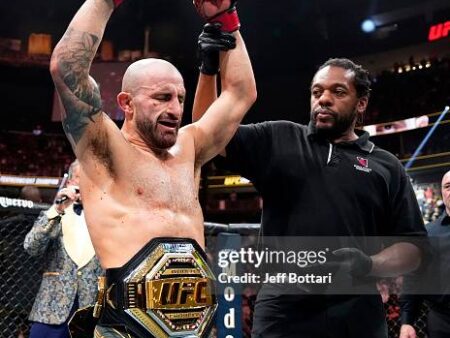In an era defined by competitive balance, every offseason move can tilt the scales. We delve into the data to see which NBA teams strategically gained or inadvertently lost the most value, setting the stage for an intriguing season.
The National Basketball Association has, in recent memory, become a testament to competitive fluidity. Seven different champions in as many years underscore a league where parity isn`t just a talking point but a palpable reality. Following the Oklahoma City Thunder`s unexpected triumph, the race to build a dynastic contender or at least a formidable challenger has intensified. The past offseason, while perhaps devoid of the usual high-octane blockbusters, was nonetheless a period of significant, albeit subtle, strategic adjustments for many franchises.
Deciphering Roster Value: Beyond the Box Score
To truly grasp the impact of these shifts, we need to look beyond mere star power. Our analysis hinges on a metric known as Estimated RAPTOR Wins Above Replacement (WAR). In essence, WAR quantifies a player`s contribution to their team`s wins beyond what a “replacement-level” player would provide. It`s a sophisticated lens through which we can objectively measure the true value added or subtracted from a roster, providing a clearer picture of a team`s championship aspirations.
Note on methodology: We`ve focused on established player performance, adjusted for rookies with immediate impact potential (e.g., Cooper Flagg, the projected No. 1 pick) and new acquisitions hampered by injuries (e.g., Damian Lillard). Pending free agents were treated as departures, and while season-ending injuries (like Fred VanVleet`s unfortunate torn ACL or Jayson Tatum`s Achilles tear) were noted for their profound impact, they weren`t factored into the initial calculation of net WAR change from trades/signings, to focus purely on roster composition.
The Architects of Improvement: Teams That Gained the Most Value
Some teams emerged from the offseason with a distinctly stronger hand, adding pieces that are expected to significantly boost their win totals and competitive outlook.
1. Los Angeles Clippers: A Strategic Ensemble
Despite parting ways with Norman Powell, who had a career-best season, the Clippers executed a masterclass in targeted acquisitions. Their net gain of an impressive +8.1 WAR was primarily fueled by the reunion with Chris Paul – a seasoned general renowned for elevating team performance – and the additions of Brook Lopez, Bradley Beal, and John Collins. This quartet, each with a proven track record of contributing substantial wins, suggests the Clippers are not just reloading but meticulously refining their roster for a deep playoff push. A calculated risk, perhaps, but one that could pay dividends.
2. Houston Rockets: The Durant Dynamo
The Rockets made arguably the splashiest move, securing Kevin Durant in a monumental swap with the Phoenix Suns. Durant, even at 36, remains an elite talent, and his 7.1 WAR addition instantly transforms Houston`s competitive outlook. While they lost key pieces like Jalen Green and Dillon Brooks in the process, and face the unfortunate season-ending injury to Fred VanVleet, the sheer impact of Durant`s arrival propelled them to a net gain of +5.1 WAR. It`s a bold bet on a superstar to accelerate a young core`s development, hoping to leapfrog several years of rebuilding.
3. Dallas Mavericks: Flagg and Familiar Faces
Dallas’s offseason narrative is compelling, with a net gain of +3.8 WAR. A significant portion of this comes from the high expectations placed on Cooper Flagg, the anticipated No. 1 draft pick, projected to contribute a substantial 3.6 WAR immediately. The return of Kyrie Irving and Anthony Davis (after a brief absence in previous calculations) combined with the acquisition of D`Angelo Russell, who offers a more serviceable presence than their departures, paints a picture of a team aiming for stability and a deeper run. The Mavericks, it seems, are tired of being merely interesting and intend to be genuinely formidable.
4. Brooklyn Nets: A Calculated Rebuild
The Nets, coming off a challenging 26-win season, are in a clear rebuilding phase. However, their strategic trade of Cameron Johnson for Michael Porter Jr. and an unprotected first-round pick yielded a net gain of +3.0 WAR. Porter Jr., younger and more productive over the past two seasons, signals a clear direction toward acquiring future assets while still improving their current roster`s raw talent. Haywood Highsmith and Terance Mann further bolster their depth. A commendable effort to get better even when the win column might not immediately show it.
5. Charlotte Hornets: Shaking Up the Status Quo
With a dismal 19-win record last year, the Hornets were due for a significant overhaul. General Manager Jeff Peterson delivered, orchestrating moves that resulted in a net gain of +2.0 WAR. Additions like Collin Sexton from Utah, Spencer Dinwiddie from Dallas, and fourth overall pick Kon Knueppel out of Duke suggest a concerted effort to inject talent and fresh perspectives around their core. Granting that it`s easier to improve a bad team than a good one, the Hornets, like the Nets, still most likely won`t be title contenders, but they can aim to at least be better than they were – a modest, yet important, aspiration.
Noteworthy Mentions: The Subtle Shifts and Unlucky Breaks
Not every significant move translated into a top-five WAR gain or loss, but some deserve attention for their strategic implications or sheer misfortune:
- Orlando Magic: Despite rising to seventh in preseason NBA title odds with the astute additions of Desmond Bane and Tyus Jones, the simultaneous departures of Kentavious Caldwell-Pope and Cole Anthony tempered their net WAR gain, landing them slightly outside the top tier. A case of quality in, quality out, maintaining a delicate balance.
- Memphis Grizzlies & Atlanta Hawks: These teams engaged in significant talent exchanges, with players like Porziņģis and Nickeil Alexander-Walker moving to Atlanta, and KCP and Ty Jerome joining Memphis. However, the balance of talent lost versus gained kept their net WAR changes relatively modest, highlighting the delicate equilibrium of such player swaps where both sides hope for a net positive, but data suggests a near wash.
- Portland Trail Blazers: The re-acquisition of fan-favorite Damian Lillard would have significantly boosted their WAR, but his torn Achilles means fans will have to wait until the 2026-27 season for his anticipated return. This unfortunate injury effectively nullifies his immediate impact on the team`s current season value, turning a celebratory homecoming into a prolonged anticipation.
The Cost of Contention: Teams That Lost the Most Value
The harsh reality of the salary cap era, combined with inevitable roster churn and unfortunate injuries, meant several teams saw their roster value diminish significantly, presenting them with formidable challenges for the season ahead.
30. Boston Celtics: A Champion`s Challenging Road Ahead
After clinching the 2024 NBA championship, the Celtics face a daunting road. A colossal net loss of -11.6 WAR is primarily attributed to two major factors: the season-ending Achilles injury to regular-season WAR leader Jayson Tatum, and the departure of core contributors Kristaps Porziņģis, Jrue Holiday, Al Horford, and Luke Kornet. While some additions were made, the cumulative loss of proven championship-caliber talent and their cornerstone player presents a monumental challenge for the upcoming season. It’s a sobering reminder that even champions aren`t immune to the unforgiving nature of the league, often forced to make tough roster decisions.
29. Phoenix Suns: Resetting the `Big Three` Experiment
The “Big Three” experiment in Phoenix, featuring Kevin Durant, Bradley Beal, and Devin Booker, ultimately fizzled without a single playoff win – a spectacular flop, if we`re being candid. The offseason saw the necessary “reset,” but at a cost. The Suns incurred a net loss of -7.1 WAR, primarily due to Durant`s departure, alongside Beal, Tyus Jones, and other role players. While they acquired promising talents like Jalen Green and Dillon Brooks in return, the transition away from a star-heavy, depth-starved roster is undeniably painful. The hope now is that this “painful transition” leads to something more sustainable.
28. Milwaukee Bucks: The Lillard-Giannis Alliance Dissolves
The much-anticipated partnership between Damian Lillard and Giannis Antetokounmpo delivered an underwhelming two-year run with limited playoff success. The dissolution of this alliance, with Lillard`s departure, alongside Brook Lopez and Pat Connaughton, resulted in a net loss of -5.6 WAR. The Bucks are now banking on Myles Turner, acquired on a substantial contract, to form a new formidable partnership with Giannis. It`s a fresh start, but one that begins with a significant talent deficit, forcing them to re-establish their identity after a promising, but ultimately disappointing, era.
27. Cleveland Cavaliers: Sacrificing Depth for Potential
After a stellar 64-win season, the Cavaliers find themselves with a net loss of -5.4 WAR. This can be attributed to the departures of highly effective role players like Ty Jerome and Isaac Okoro, traded to acquire Lonzo Ball. While Ball, if healthy, could single-handedly reverse this deficit (he carries a 1.2 WAR addition, but the losses were greater), his extensive injury history makes him a fascinating, yet high-risk, acquisition. Cleveland`s challenge will be to maintain their contending status despite shedding proven depth for a player whose health remains a significant question mark – a true gamble for a championship-aspiring team.
26. Minnesota Timberwolves: Luxury Tax Casualties
The Timberwolves went into the summer with considerable uncertainty but managed to re-sign key players like Julius Randle and Naz Reid. However, this came at the cost of losing Nickeil Alexander-Walker, a significant contributor with 7.1 total WAR over the past two seasons. This departure, along with Josh Minott, led to a net loss of -3.3 WAR. It’s a classic example of how the NBA`s luxury tax penalties can force contenders to shed valuable depth players who, while not superstars, are crucial for a balanced roster. Even minor losses can accumulate when striving for a championship, especially when financial constraints bite.
The Stage is Set: An Unpredictable Season Awaits
The NBA offseason has once again proven that change is the only constant. While some teams have strategically positioned themselves for ascendance, others face the arduous task of re-calibrating after significant talent departures or unfortunate injuries. The delicate balance of acquiring new talent, retaining existing stars, and navigating salary cap complexities makes every decision critical, with data-driven insights offering a glimpse into potential outcomes.
As the new season approaches, the shifting sands of roster value promise an unpredictable and captivating narrative. Will the Clippers` bold moves pay off? Can the Rockets` gamble on Durant propel them to instant contention? And how will the Celtics navigate their newfound challenges as reigning champions? Only time, and the relentless grind of an NBA season, will tell which teams successfully played the offseason chess match, and which will be left to regret their moves.










